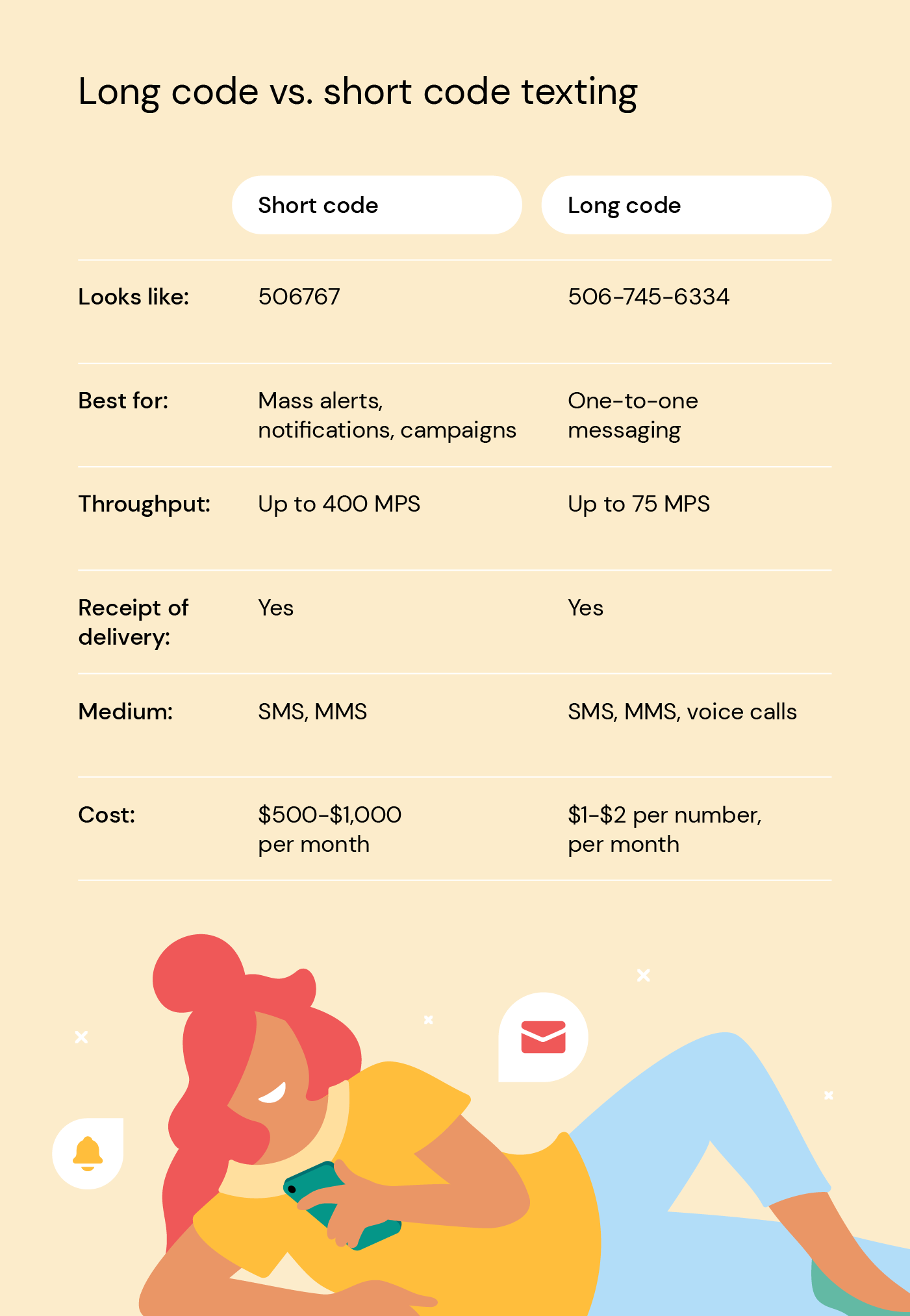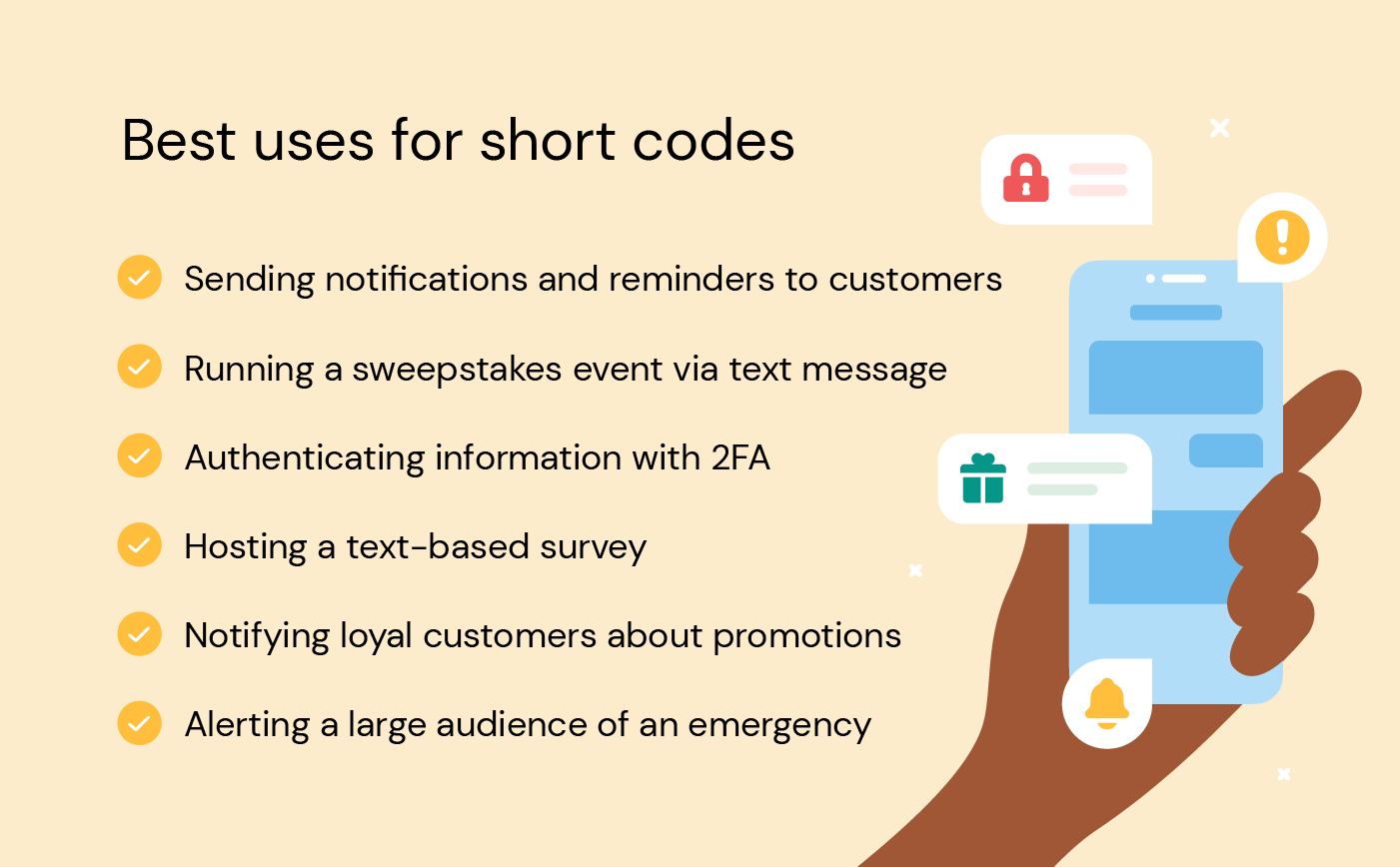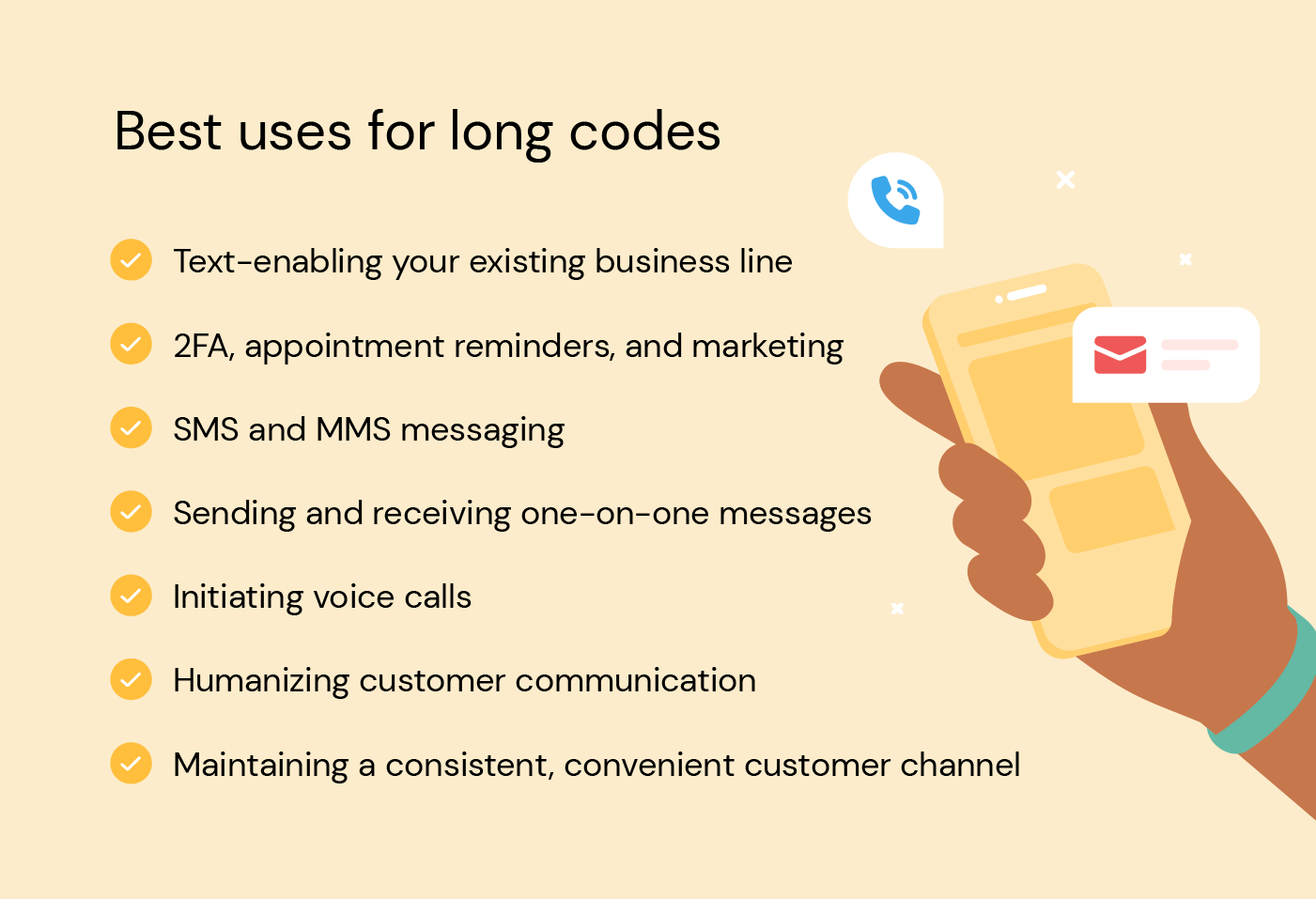Insights
Long code vs. short code texting: The complete guide to SMS

Insights

Customers are using more channels than ever, which means companies have a variety of ways to reach them. But not all channels are created equal, and any marketer worth their salt knows that to convert customers, you have to reach them on the channels they like best.
Texting is a highly effective and direct way to reach users – so effective that nearly 9 in 10 people want messaging options rather than talking on the phone when it comes to marketing channels. But how do you ensure that customers are engaging with your text messages?
Long codes and short codes are two different ways to send text messages to users. Each has upsides and shortcomings for businesses looking to convert as many customers as possible. Let’s explore these differences and take a closer look at how each texting method can benefit your marketing strategy.

The difference between long codes and short codes in SMS marketing is that a long code uses a standard telephone number (around 10 digits in most markets). Short codes support bulk application-to-person (A2P) messaging and uses a five- or six-digit number, or sometimes a shorter or longer number from three to eight digits.
Short code messages have a higher throughput than long codes, meaning many more can be sent per second. This makes short codes great for mass notifications and alerts, while long codes are better for smaller messaging campaigns designed to have a “local feel” to your messaging campaign rather than from an unknown short code number.
And while short codes may come with a higher cost, they also have more functionality. For example, businesses can confirm delivery with receipts to make sure no one misses out on an important notification.
You can also include public URL shorteners (bit.ly) to short code campaigns, whereas if you use these over long code messages, they will be blocked.
Short codes are five or six-digit numbers that allow companies to utilize a high SMS or MMS throughput with their messaging strategy. They’re designed for marketers who need a wide reach and want to share simple information or reminders, though they can handle two-way messaging, too.
If you’ve ever subscribed to get a discount from your favorite store or restaurant, you were probably using a short code to do so. They’re ideal for encouraging customers to interact with deals and other services since they’re short and relatively easy to remember.
Short codes come in two different types that businesses can utilize:
Short codes can also be separated into two categories based on their end cost to users:
Individual countries and their wireless carriers monitor and approve short codes to safeguard customer data and limit spam, though they sometimes slip through the cracks. Sinch takes safety a step further and monitors short code text content for added security.

Short codes can handle high throughput volumes – up to 400 message segments per second (MPS).
This volume means they’re great for companies that need wide messaging blasts to reach their users with discount codes, 2FA alerts, emergency alerts, sweepstakes notifications, and text surveys. Since they also send and deliver quickly, customers can click that discount link or remember to answer a marketing survey in less time.
Whether companies use a customizable vanity code or a random code, they can use keywords and automated responses that reflect specific content. If your brand has a buzzword or catchphrase that can fit into six characters, you can opt for a vanity code that serves to mimic your marketing message and build awareness for your campaign.
Even though short codes have a number of exciting use cases to benefit companies, they also have some limitations that can disqualify them from some companies’ strategies and budgets. Short codes are:
If these drawbacks clash with your brand’s dreams of implementing an SMS marketing plan, long codes may work better for you.
Long codes are usually 10-digit numbers companies can use for small-scale, one-to-one communication with customers. They have a throughput rate of anywhere from 1 to 75 MPS, meaning they’re not ideal for mass text blasts or any kind of alert that needs to reach a wide audience.
Using a long codes brings a local feel to the customer. Businesses text-enable their landline phone number so that customers will recognize it and feel more comfortable knowing who the sender is.
Companies can use two types of long codes:
Both long code types support two-way messaging, SMS, MMS and voice. They’re both sanctioned A2P sender types. They can both handle customer service, campaign updates, and other alerts and notifications in order for the local business to reach it’s customers over a phone number which customers are familiar with.
Even if your brand wants to use an alternative messaging channel like WhatsApp and list the brand name as the sender, you’ll need to provision a sender ID – a hidden long code that businesses often don’t consider – to verify your business’s identity. Provisioning can be a hassle, which is why it benefits businesses to work with an aggregator like Sinch.

Long codes can’t send as many simultaneous messages as short codes, but that’s because they’re designed for a different purpose. These messages help brands communicate with customers in a way that feels more human with that local feel, reassuring the user that they’re not being cycled through a loop where they continually need to repeat details and context to move the conversation forward.
Long code messaging feels more personalized on the user’s end and creates a consistent communication channel for boosted customer convenience. Your company can also use the same number for texting and calling your customers so they don’t have to wonder why a random number is reaching out.
Of course, long codes won’t meet every business need. Their most notable drawback is limited functionality compared to short codes, even though they have some features that short codes don’t (like voice calling).
Some of their limitations include:
Public URL shorteners will be blocked, so use a private shortener to avoid spam filters.
Bottom line: Your brand needs to be able to reach customers and not blow the budget along the way. With long and short code messaging, your business has distinct options to meet its marketing objectives head-on, whether that entails detailed one-on-one communications, larger notification blasts, or a mixture of both.
Each sender type has it’s unique positives and negatives. As the brand, you need to weigh your needs and decide which option is best for you.
For more info, learn how to ace omnichannel engagement with conversational messaging across platforms by downloading our guide.
Looking for a messaging solution? Check out Sinch Engage, a single, powerful platform for all your messaging needs. Or, reach out to our team to learn more about what makes Sinch the best SMS API provider for your business.